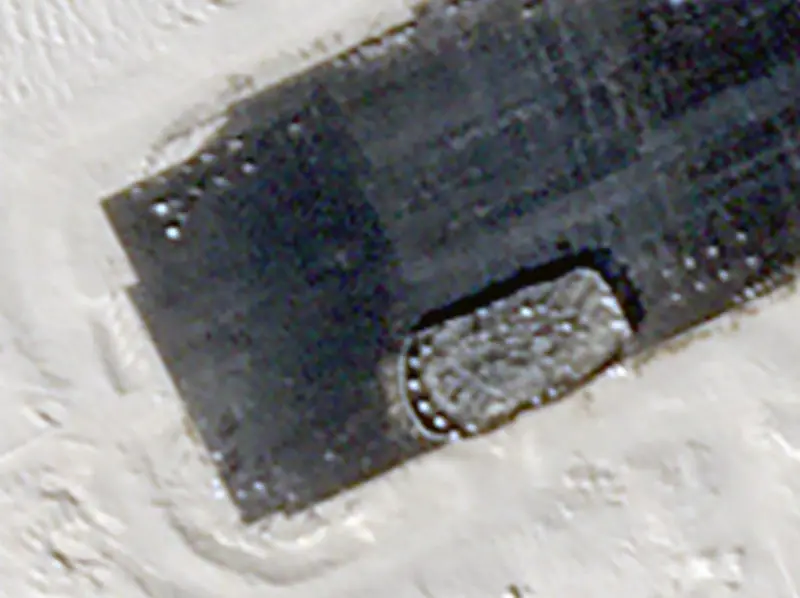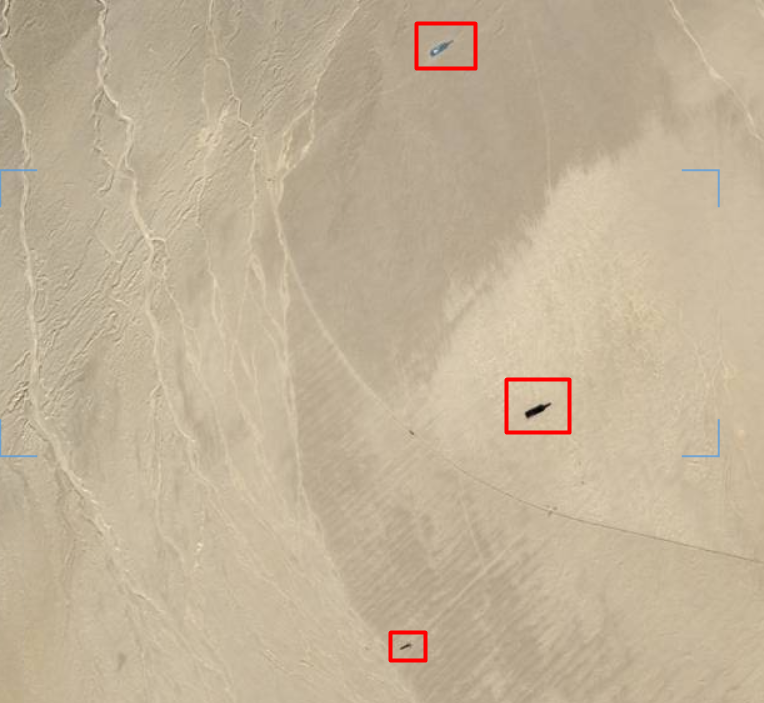
China has built a full-scale target of the US nuclear-powered aircraft carrier Gerald R. Ford class nuclear aircraft carrier in the Taklamakan Desert.
This was reported by The Drive.
The target underscores the People’s Liberation Army’s continued focus on expanding and improving its ability to engage U.S. aircraft carriers and other warships at long range.
The Chinese have completely repeated the silhouette of the aircraft carrier, including the superstructure, four catapult tracks and other structural elements.
Special masts are placed around the target, which can probably be used as reflectors to simulate the radar silhouette of a ship without the need to build a three-dimensional target.

Work on the aircraft carrier began in November 2023. A review of past satellite images taken by Planet Labs shows that the approximate outline of the ship has been present for some time.
Several smaller silhouettes of aircraft carriers were also erected within the larger outline and subsequently removed.
In addition to aircraft carrier targets, there are other targets in the Taklamakan Desert: looking at satellite images, one can detect the silhouettes of Arleigh Burke-class destroyers.

Earlier, Militarnyi reported on the rapid strengthening of the capabilities of the PLA Navy.
For example, on December 14, it was reported that the launching ceremony of the fourth Type 075 amphibious assault ship was held at the Hudong-Zhonghua shipyard in Shanghai.
This is the fourth Type 075 multipurpose amphibious assault ship being built for the Chinese Navy as part of a program to strengthen its amphibious assault capabilities amid deteriorating relations with Taiwan.
Earlier, on November 26, it was reported that an electromagnetic catapult was tested on the Chinese aircraft carrier Fujian.
The catapult is tested with a “dead weight” comparable in weight to deck aircraft, launched into the water to test the reliability and power of the catapult.
It is known that the Fujian is due to go to sea next year, and commissioning, if no problems are found, is scheduled for 2025.

